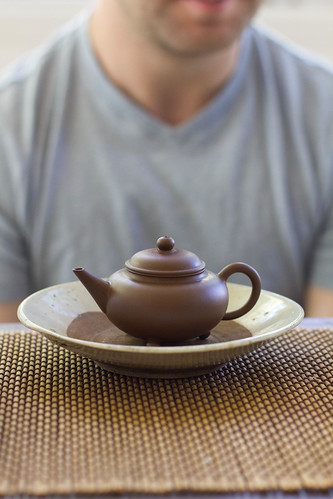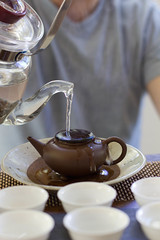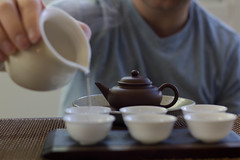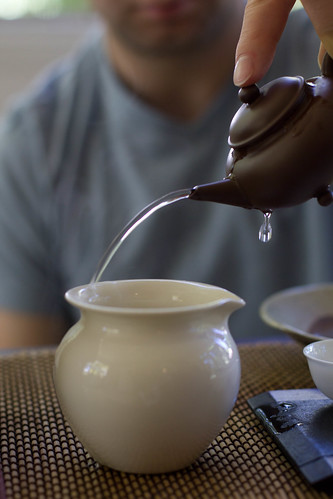This is Part One in a two part series about evaluating Yixing pots. It is inspired in part by Michael Wong of The Tea Gallery.

The world of Yixing teapots can sometimes seem a daunting mystery. Among tea lovers, few subjects garner so many strong opinions. Preferences among collectors can be based on size or shape of the pot, the type or quality of clay, age, or craftsmanship.
In this short series, we make no claims about the desirability of any of the above properties. Instead, we offer a series of experiments to aid you in evaluating any type of teapot. We hope they will be useful in both evaluating new teapots, and performing a “check up” on a well-loved pot.



As all tea begins with water, so does our exploration of Yixing. You should stick to the water you use most often and are best acquainted, avoiding things that might change the texture of the water. Since I have been using the Maifan stones for most teas recently and have become accustomed to their influence, I decided to keep them for this test.
Begin by filling the teapot with water (bonus points for testing both cool and boiled water), leaving it some time to mingle with the clay. Decant. Serve identical cups of water directly from the source, and from the pot. Note the differences.
Does the water have a thicker feeling, a lasting feeling in the mouth, or any flavors picked up from the pot? From this particular pot, we noticed both a liveliness in the mouth and a slight floral taste. The pot is heavily seasoned with Wuyi tea.
Also note any feeling to occur in your throat, positive or negative.

When pouring water from the pot, also take special notice of two things.
First, how long does it take to empty the pot. Is it difficult to empty all water from the pot? (I most often have this problem with ball shaped filters.)
A long pour (> 10-15s) can be detrimental to your brewing of sensitive teas. Remember to factor pour times into your brewing. Also watch for drips, usually from the front of the lid. It is not uncommon for even a well crafted pot like this one to lose a few drops when you first start pouring. Excessive dribbles or drips after the very start of the pour could give a pot negative marks - but some old pots are beautiful enough to use in spite of their flaws.
Take your observations on changes in water and try to imagine how these qualities might be a benefit or disadvantage to your favorite teas.
Read on to Part Two, where we examine the effect of the clay pot on tea.
Credits: Photography by Dae. Handsome modeling by David.